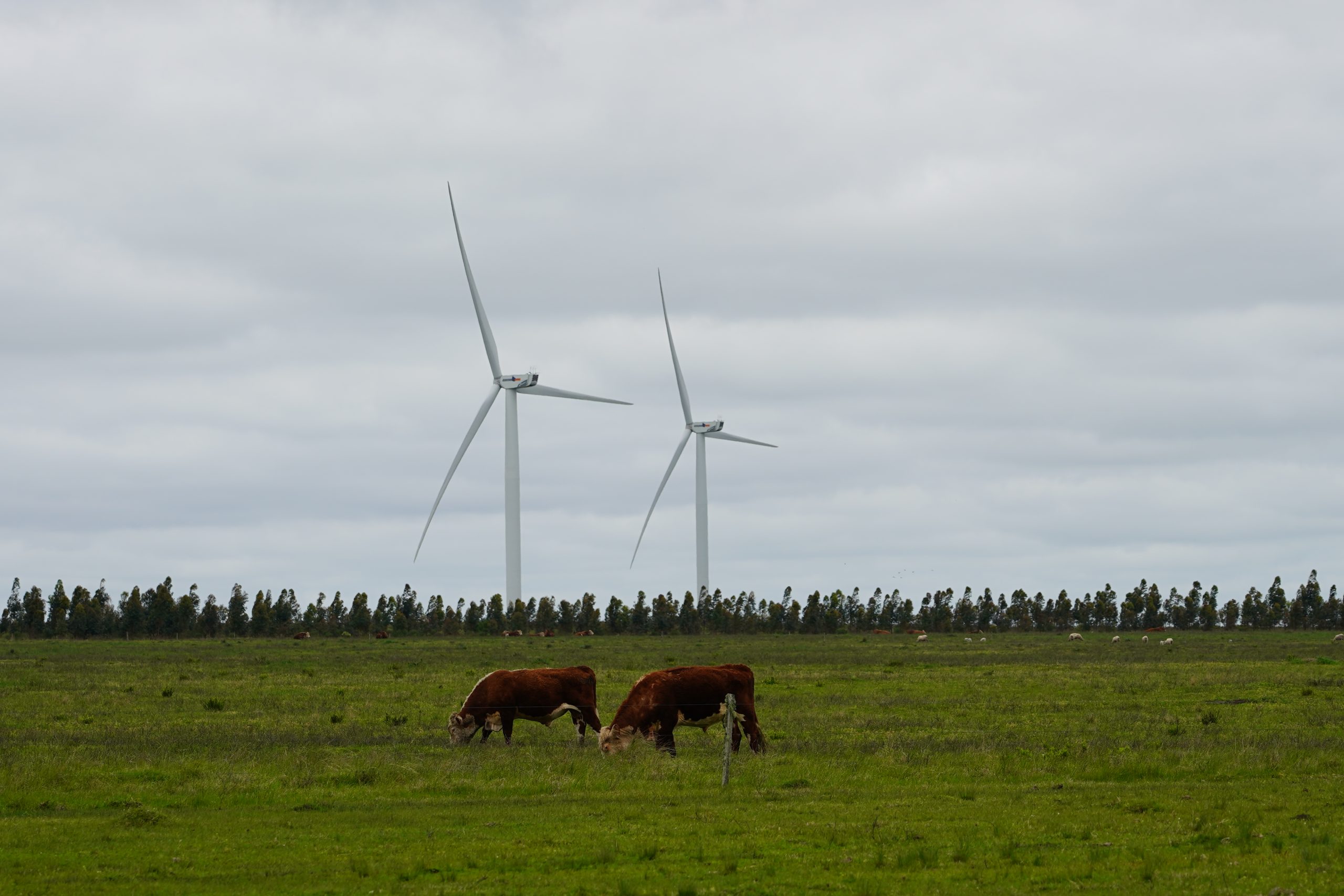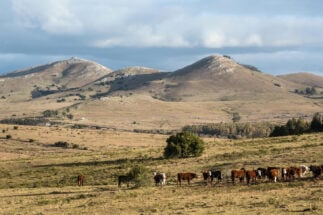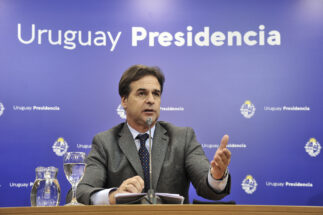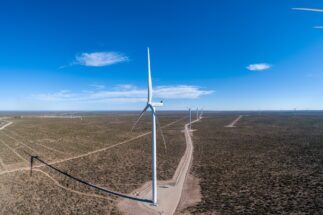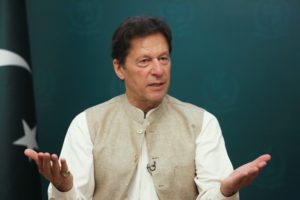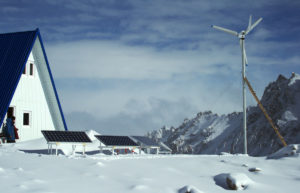The carbon-neutral economy is a flag flown by NGOs, companies and international organisations. In their pledges to combat climate change under the umbrella of the Paris Agreement, countries have also put down in writing their targets for lower-emissions economies. Now they are obligated to being accountable and showing their progress – to move from merely acting politically correct, and towards fulfilling a duty to actually act.
Uruguay is no exception to this trend: a country that wants to appear green and for nature, but also to demonstrate it in practice.
The role of pastures
Pastures improve the soil and increase the presence of microorganisms that benefit it with more organic matter. Crops then have more growth in such soils. But how much grazing is enough? And how often? These were the common questions asked for centuries.
In 2015, Uruguay’s National Institute for Agricultural Research (INIA) sought reform. It put together its five-year plan, with the focus on producing more and on being more profitable, but with increasing importance given to environmental impacts.
After studying in Germany, Fernando Lattanzi arrived in Uruguay that year and settled in the department of Colonia to work at INIA. Within 15 days of his arrival, he and a delegation from the institute were received by the then Minister of Livestock, Agriculture and Fisheries (MGAP), Tabaré Aguerre, together with his climate advisors. The subject of the meeting was the environmental commitments that Uruguay was to assume before the United Nations at the Conference of the Parties (COP21) in Paris a few months later. They put numbers on the table and worked together on a “reasonable” proposal for the country’s future, Lattanzi recalls.
Yes, Uruguay is a small country that contributes little to global emissions, but it’s about each of us contributing and also adapting to consumer demand
In December 2015, Uruguay presented its goals, while warnings about rising global temperatures were sounding loudly. Carbon emissions were at the centre of the discussion, given their contribution to climate change. How to reduce them? How to ensure that the soil captures carbon and does not release it into the atmosphere?
Lattanzi began to further his study of soil carbon. Today, he leads INIA’s national research programme on pastures and forages, with a direct focus on the concerns of producers and the government.
“It all starts when we do research. Why measure greenhouse gases and not use those efforts to study how to produce more wheat?” says Lattanzi. “Yes, Uruguay is a small country that contributes little [to global emissions], but it’s about each of us contributing and also adapting to consumer demand.”
Carbon can accumulate as organic matter in the soil and remain there for decades, or even hundreds of years. Pastures contribute to this, in large part, thanks to the abundant amount of roots they produce and also, by continuously covering the soil, they protect it from erosion. In this way, they remove carbon from the atmosphere and sequester it in the soil, helping to mitigate global warming.
The MGAP has the information to estimate the area covered by pasture and to count how much carbon the country is sequestering. It includes this in the national emissions inventory, which are the calculations with which Uruguay is accountable to the international community, in its part in the fight against global warming. But what is missing?
It is necessary to “measure and have systems for monitoring, reporting and verification of carbon stocks in the soil, in order for them to be accepted as valid by the rest of the countries,” explains Lattanzi, This is what INIA is working on, measuring the amount of carbon accumulated in the soil over time in different sequences of crops and pastures.
2030
Uruguay is forecast to be carbon neutral by the end of the decade, according to its NDC to the Paris Agreement
To do this, Lattanzi uses data from historical experiments that started decades ago, and new ones that INIA is currently carrying out. Some of these long-term soil carbon experiments are “the oldest in South America”, he notes.
The INIA research team expects to close 2021 with a “milestone”, Lattanzi says. They hope to show that the country’s crop-livestock production systems are effectively sequestering carbon.
They are also studying whether an overgrazed farm could recover some of the carbon in the soil with better management, if more biodiverse pastures better sequester carbon, and whether irrigation of crops and pastures increases carbon sequestration. The opportunities for the future are great.
A new ministry
Certifications proving that a product was made with respect for the environment exist, and international markets are increasingly demanding them. This is not only an environmental issue, but also a commercial and productive one. Uruguay, which focuses its exports on raw materials, has set itself the goal of halving its emissions by 2025, while increasing production of meat. The country’s task is to make all this compatible.
“Uruguay must establish itself as a natural food producer and an environmentally responsible country, and it must be able to demonstrate this. I call this ‘giving back’ the environmental component of the ‘Natural Uruguay’ brand,” Minister of the Environment, Adrián Peña, says. “There are measurements [for soil carbon], but they are disorganised. We have to organise all this so that we can then start to certify what the world is asking for.”
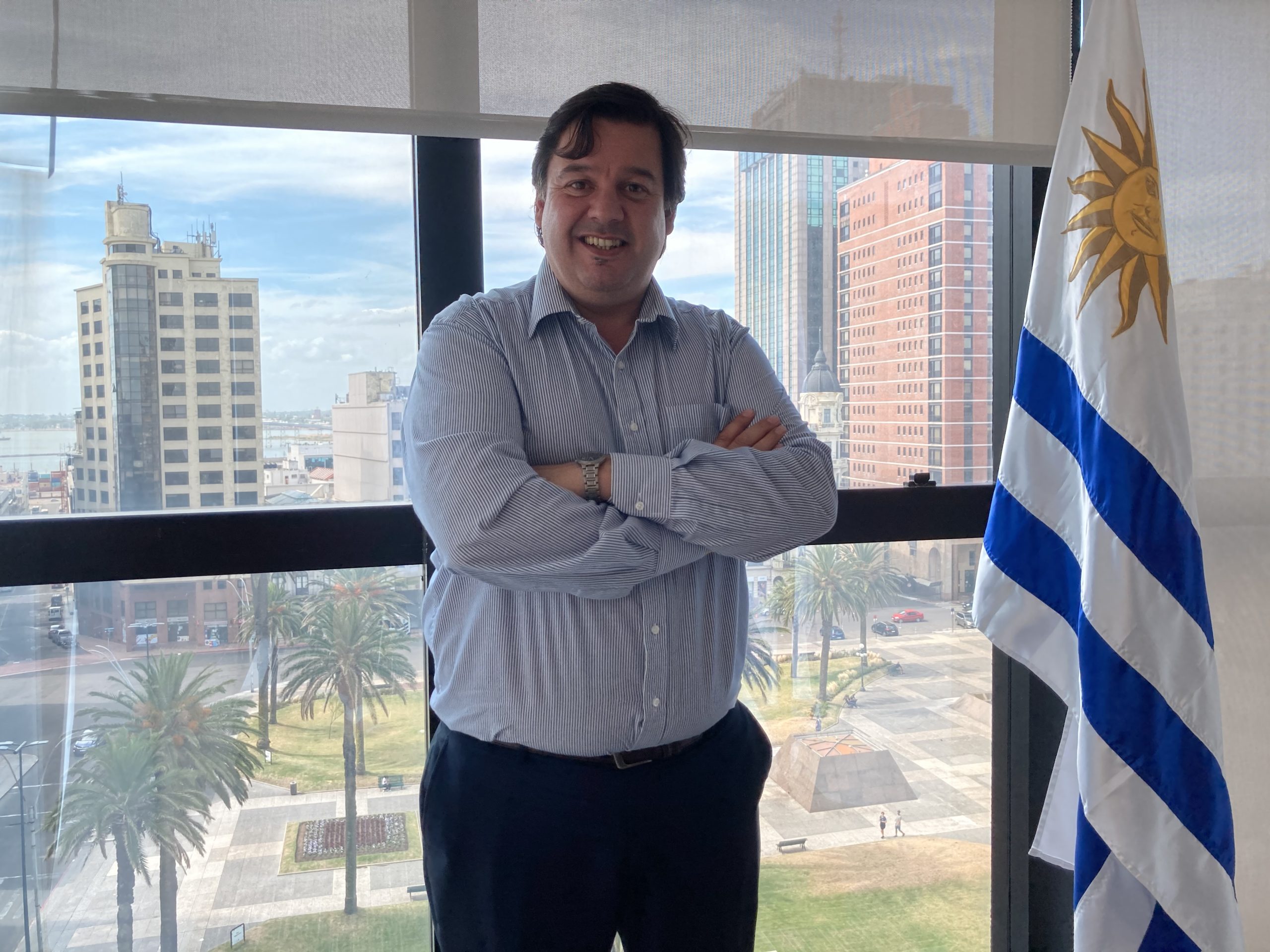
Peña is optimistic. The way forward is to “think in the long term and align policies”, he says. “This is what we have to do, the macro vision, and fortunately we are beginning to achieve it,” he argues. He celebrates the good links with the Ministry of Economy and Finance, which will be key in managing and driving the transition to zero carbon.
In 2020, the Minister of Economy and Finance, Azucena Arbeleche, set up an environmental cabinet with members from INIA and a coordinator, Marcelo Caffera, an economist specialising in environmental issues, who is the link with the Ministry of Environment.
“The real incorporation of environmental policy, climate change and sustainable development into economic policy is a very important change. I am encouraged,” Peña says. “I thought it might be just a change in discourse, but I saw that Arbeleche did indeed incorporate these things and that we are aligned on where to go. Not only do the public have to incorporate this vision, but also the private sector.”
Amid opposition, for example, to beef from environmentalists, Uruguayan producers warn that it is a great challenge to improve management and rotation of pastures, and “they are now concerned about this issue after recent episodes in which production has been questioned,” says Peña.
In June, during an event aimed at the private sector, Peña insisted that he is working with the Ministry of Economy and Finance to ensure that the objectives of mitigating greenhouse gas emissions and adapting to climate change “are part of the analysis and conception of macroeconomic policy, as well as generating the conditions for Uruguay to move firmly and steadily towards a low-carbon economy”.
Peña insists on the need to position Uruguay as a country of sustainable production by means of data and technology, and to establish itself with more evidence to protect the environment, measure water, soil and biodiversity, and combat problems that affect water quality. To achieve this, it has initiated steps to set up an office to link it with academia, insisting on greater proximity between the two.
Renewable country
Uruguay needs an average of 1,200 megawatts (MW) to supply its energy needs. In the early mornings, it uses about 600MW. On most days last year, its installed capacity of wind (1,500MW) and solar (200MW) exceeded the energy demand.
98%
The percentage of renewables in Uruguay's energy mix
The biggest shift to a renewable matrix in the country already occurred a decade ago, and future changes will be smaller, according to the Energy Policy 2005–2030 that emerged from an all-party agreement.
Uruguay’s energy matrix is made up of 98% renewable sources and only 2% thermal generation. Of renewables, approximately half corresponds to hydro power and the other half to wind, biomass and solar, in order of importance.
This means that there are no longer large thermal power stations, but hundreds of wind turbines and solar panels connected to the grid in different parts of the country. If a wind turbine breaks down, it does not destabilise the system: it is just another point in the entire grid. If wind power goes down at midday, solar power goes up, and the opposite happens at night. The list of benefits of having multiple renewable sources is long.
Thus, Uruguay demonstrated that it is possible. But, the success in managing these distributed sources of generation is based on making good decisions, which required research and the development of tools to simulate how the system would work.
The Little Tractor
A research team led by Rubén Chaer, head of Technical Management and National Load Dispatch at the Electricity Market Administration (ADME), is finishing a project they call the “Little Tractor”, a fundamental piece for the future of the energy sector.
It is something similar to “a robot that learns based on simulations”, comparing the cost of each energy decision to be made and suggesting the best option, for example, on how much energy to export and when, says the engineer.
Today, Uruguay is operating a machine they call Vates – and it is always looking ahead, integrating energy forecasts and reporting, and publishing the probable dispatch of the following hours. It is the sum of all previous research projects.
“The current robot is reaching its limit in terms of speed, for the details we want to add in the operation. The Little Tractor is the result of the latest project funded by the national research agency – a robot with a learning capability so that it can focus on using the computing power in the most relevant aspects,” says Chaer.
This article is part of Comunidad Planeta, a journalism project in Latin America led by Periodistas por el Planeta (PxP), where it was first published. It is reproduced here with permission.
